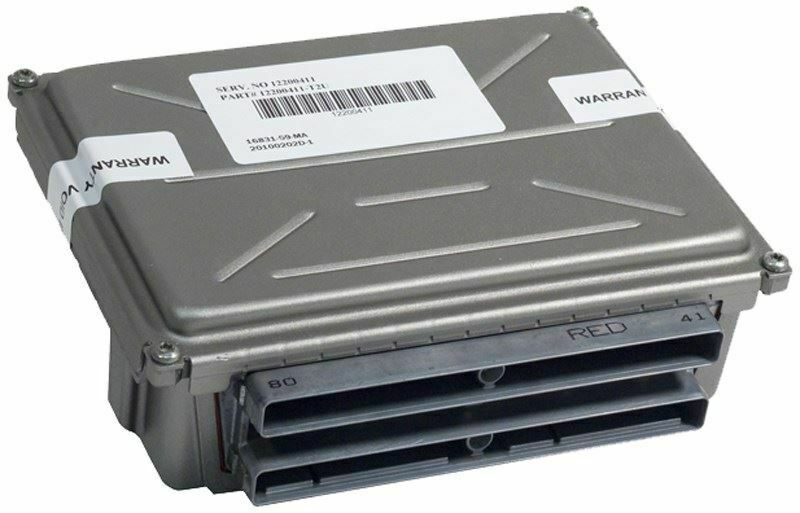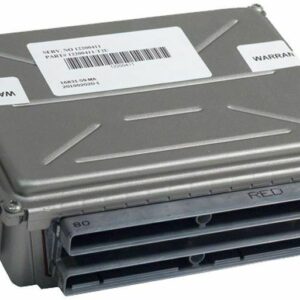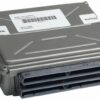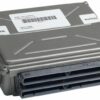Restore Your Truck’s Performance with a Reliable, Programmed PCM
Is your Chevrolet Avalanche, Silverado, or another GM truck acting up? Dealing with a persistent check engine light, erratic shifting, or a frustrating no-start condition can bring your work or weekend to a halt. As a technician with over two decades of experience under the hood, I’ve seen countless vehicles sidelined by a failing Powertrain Control Module (PCM). The PCM is the brain of your engine, and when it falters, the symptoms can be confusing and widespread. This isn’t just a replacement part; it’s a direct solution, programmed specifically for your vehicle to restore its original performance and reliability.
This module, part number 89017750, is the definitive fix for many common electronic issues. We take the guesswork and high dealership costs out of the equation. Before we ship, our experts will flash the module with the latest, most stable GM software updates using the VIN you provide. This ensures that when it arrives, it’s ready for a straightforward installation, communicating perfectly with your truck’s systems. You’re getting a component that’s not only a direct replacement but also optimized for your specific vehicle configuration.
From the Diagnostic Bay
I remember a 2005 Silverado 2500 that came into my shop with a problem that was driving the owner crazy. It would randomly stall at stoplights, but never set a consistent trouble code. We checked fuel pressure, sensors, and wiring harnesses—everything looked fine. After hours of diagnostics, we finally caught a momentary communication loss with the PCM on our scope. The internal processor was failing under specific heat conditions. We installed a VIN-programmed PCM just like this one, and the truck ran flawlessly. It’s a classic example of how a failing 2003-2006 Avalanche 1500 PCM (or its equivalent in other models) can create ghost-like issues that are impossible to trace to a simple sensor.
Is Your Truck Showing These Symptoms?
A failing PCM can manifest in various ways. If you’re experiencing any of the following, a faulty engine computer could be the culprit:
- ✔ Check Engine Light is on with communication-related Diagnostic Trouble Codes (DTCs) like U0100, U0101.
- ✔ Internal module fault codes are present, such as P0601, P0602, or P0606.
- ✔ The engine cranks but will not start.
- ✔ Poor or erratic automatic transmission shifting.
- ✔ A noticeable drop in fuel economy for no apparent reason.
- ✔ Intermittent stalling, rough idling, or engine hesitation.
- ✔ Communication issues with your diagnostic scan tool.
A Straightforward Guide to Installation
Installing your new 2003-2006 Avalanche 1500 PCM is a job most DIYers can handle with basic tools. Since it comes pre-programmed, you’ll avoid a trip to the dealer for software setup. Just follow these steps carefully.
- Safety First: Disconnect the negative terminal from your vehicle’s battery and secure it away from the post to prevent any accidental reconnection.
- Locate the PCM: On most compatible trucks and SUVs, the PCM is located in the engine bay on the driver’s side, often under or near the battery tray in a black plastic housing.
- Disconnect the Connectors: Carefully unlatch and remove the wiring harness connectors from the old PCM. These connectors have locking tabs; be gentle to avoid breaking them. Note their color and position.
- Remove the Old Module: Unbolt the PCM from its mounting bracket. It’s typically held in place by a few small bolts.
- Install the New PCM: Mount your new, programmed PCM onto the bracket and securely fasten the bolts.
- Reconnect Everything: Plug the wiring harness connectors into the correct slots on the new module. You should hear a click as they lock into place. Reconnect the negative battery terminal.
- Perform Relearn Procedure: In many cases, you will need to perform a security relearn (often a simple 10-30 minute key-on procedure) and a Crankshaft Variation (CASE) relearn, which may require a capable scan tool. This is critical for proper engine operation.
Verified Vehicle Compatibility
This Powertrain Control Module is a direct replacement for service numbers 89017750, 12582605, 12589463, 12602802, 89017734, and 28042802. It fits a wide range of GM trucks and SUVs. Please verify your vehicle is on this list. Note that for some 2004 models, matching the ID number 12602802 is important.
- Chevrolet Avalanche 1500: 2003, 2004 (ID 12602802), 2005-2006
- Chevrolet Silverado 1500/2500/3500: 2003-2007 (Classic Style)
- Chevrolet Suburban 1500/2500: 2003-2006
- Chevrolet Tahoe: 2003-2006
- GMC Sierra 1500/2500/3500: 2003-2007 (Classic Style)
- GMC Yukon / Yukon XL: 2003-2006
- Cadillac Escalade / ESV / EXT: 2003-2006
- Hummer H2: 2003-2007
- And more…
How does the VIN programming work?
After you place your order, you will need to provide us with your vehicle’s 17-digit VIN. Our technicians use this number to flash the module with the correct, factory-approved software for your specific engine, transmission, and options. This ensures it works seamlessly with your truck right out of the box.
Do I need to do anything after installing this 2003-2006 Avalanche 1500 PCM?
Yes. While the main programming is done, you will likely need to perform a security relearn procedure, which can often be done without special tools. A Crankshaft Variation (CASE) relearn is also highly recommended to prevent misfire codes and ensure smooth operation; this typically requires a bi-directional scan tool.
Is this a plug-and-play part?
Essentially, yes. Because we program it to your VIN, it eliminates the most difficult step. The physical installation is straightforward, but as mentioned above, a security and CASE relearn procedure is a necessary final step for the vehicle to run correctly.
Where is my VIN located?
You can find your 17-digit VIN on the driver’s side of the dashboard (visible through the windshield), on the driver’s side door jamb sticker, or on your vehicle’s registration and insurance documents.
Will this fix my specific problem?
This PCM is a direct solution for failures within the module itself, which cause the symptoms listed above. However, it’s crucial to ensure your vehicle’s problem isn’t caused by faulty wiring, sensors, or other components. Proper diagnosis is key to any successful repair.



